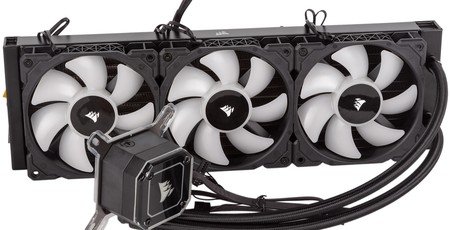
Software
iCUE has come a long way since its inception (when it came with a 136-page user manual!). For the new Capellix coolers, setting the pump and fan speeds to one of Corsair’s built-in profiles is very easy, and the same is true for setting up custom curves or applying fixed fan speeds. Similarly, the various lighting menus are a cinch to navigate, and the ability to reorder and rotate the fans in the software is a handy addition, as it means you don’t have to worry about remounting the fans if you happen to have put them out of order or aligned them in different ways to assist cable routing, for example. Below we go through each of the main menus in a little more detail.
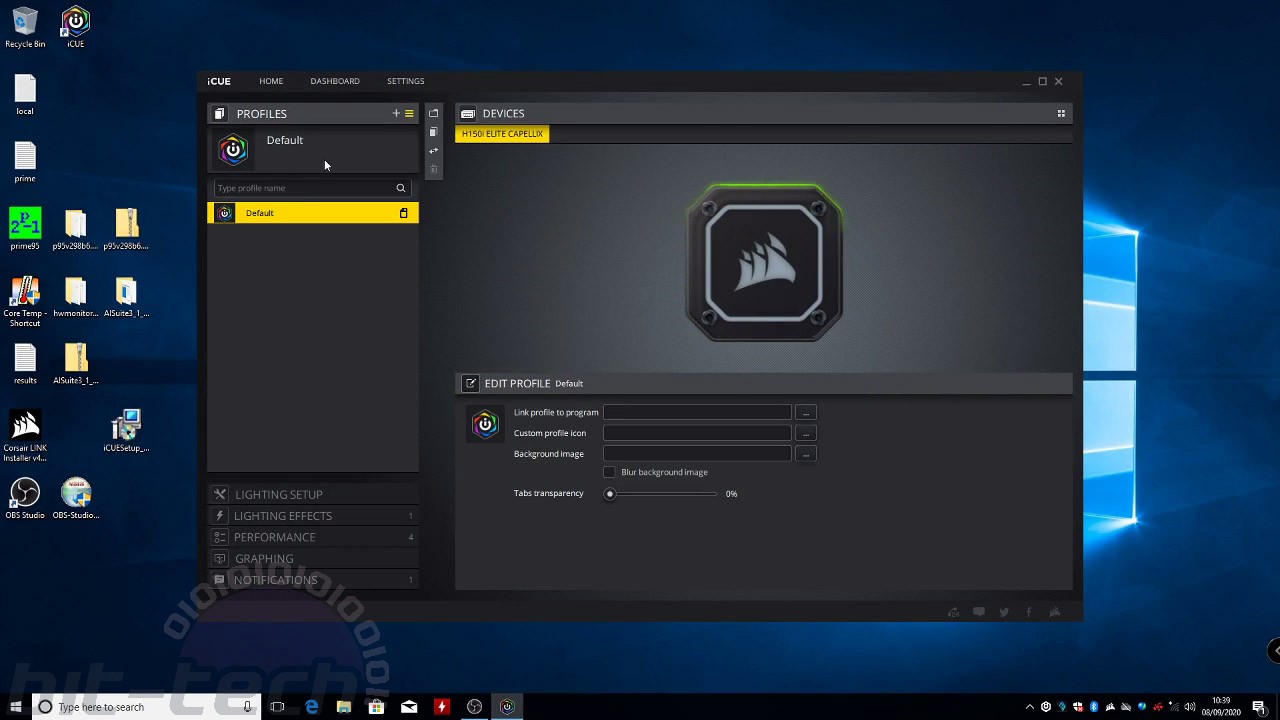
The Profiles menu is where you can add and edit software-based profiles, not just for the cooler but for all compatible Corsair hardware. These can be linked to automatically trigger when certain applications or games are launched.
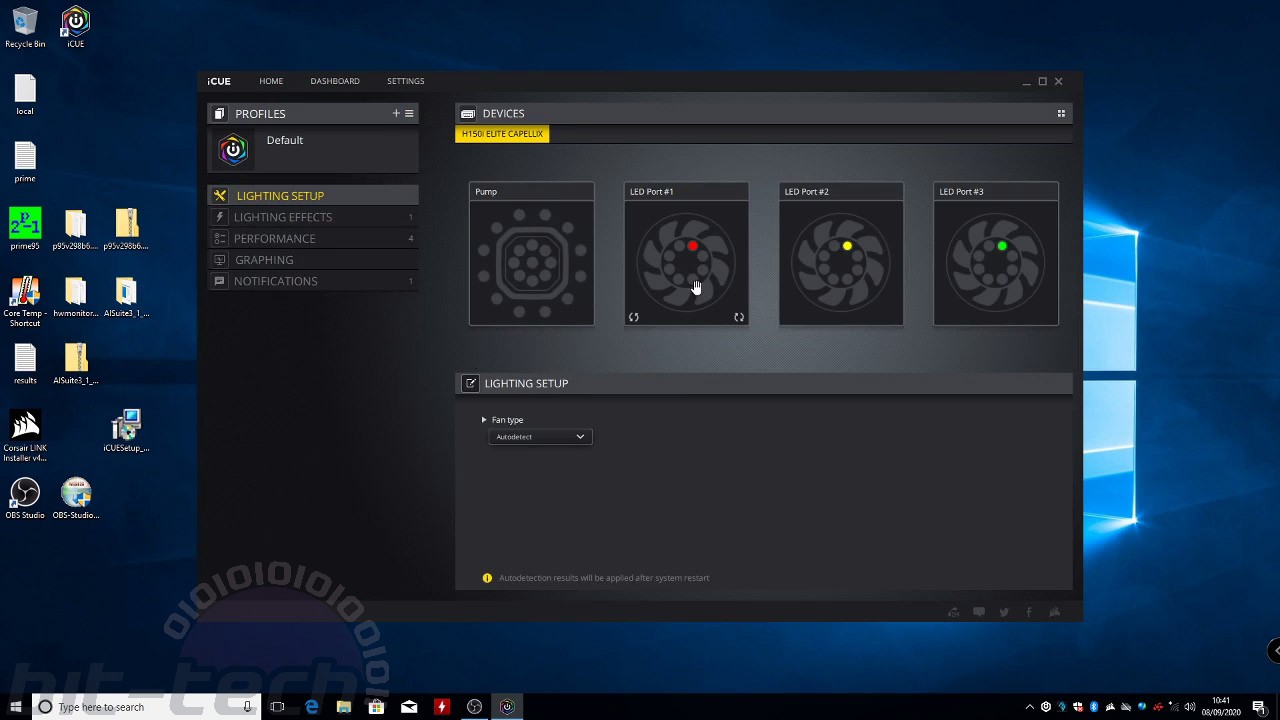
Under Lighting Setup is where you can tell the software which order you have your fans in and how they are rotated. The software will display how it thinks things looks and illuminate the corresponding LEDs on the fans, and it’s then up to you to use drag and drop and the rotate buttons to tell the software how it really looks. When the onscreen LEDs match the position of the actual ones, you’re good to go and use the different effects as they were intended.
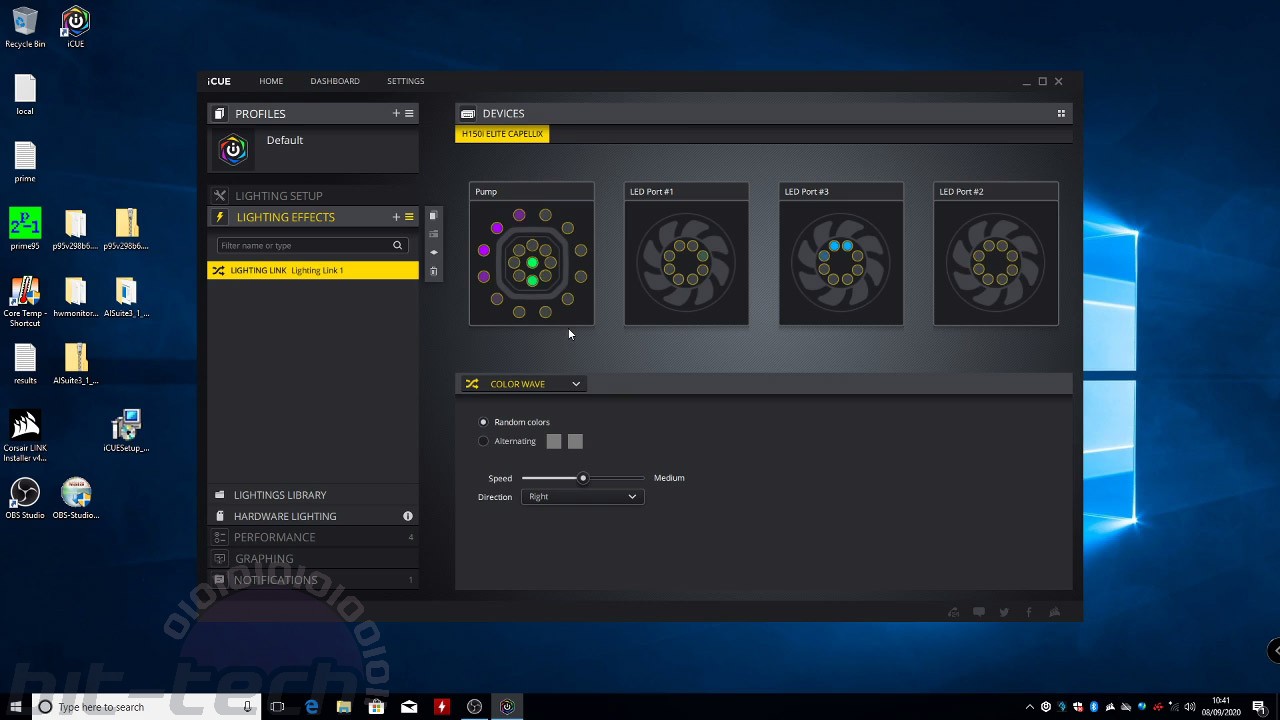
The Lighting Effects menu is self-explanatory in function. The drop-down menu makes it clear which effects are specific to the cooler and which can be used as Lighting Link effects (i.e. synchronised with other hardware). The custom effects are as deep as ever, and each effect brings up a relevant selection of settings to change (e.g. colours and speed). Those who wish to precisely tune their RGB LEDs will be very at home here, and it’s handy that you can customise how the lights behave when iCUE isn’t running, though the effects selection is understandably less comprehensive.
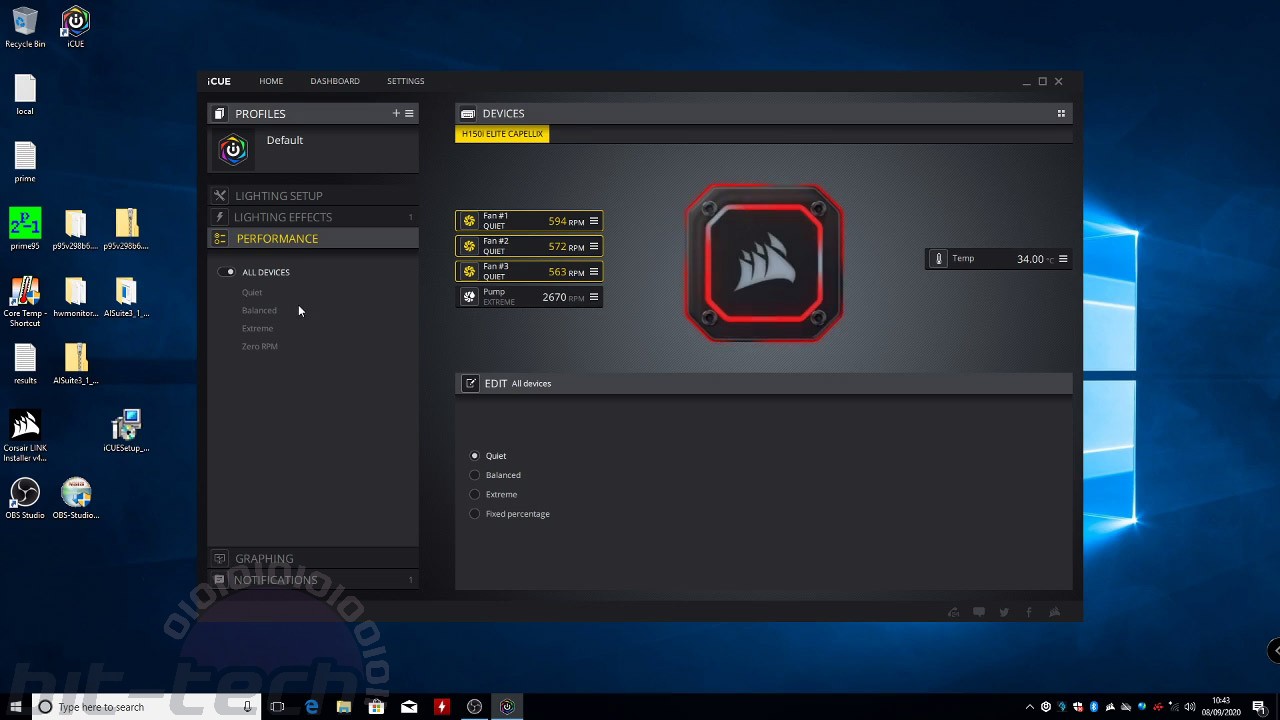
Moving onto Performance, here is where you control the cooling behaviour of the pump and fans. The Quiet, Balanced, and Extreme profiles can be applied to both the fans and pump, and you can treat each fan independently or apply settings to all devices. They act as temperature-based response curves for the fans and as fixed speeds for the pump. The Zero RPM profile is for fans only and is the least aggressive fan curve of all, plus it will switch the fans off entirely when the coolant temperature is low enough. Adding custom curves is straightforward too, likewise with simply setting a fixed fan speed for all performance conditions. Note that the cooler has a built-in failsafe curve that cannot be overridden – this is a good thing.
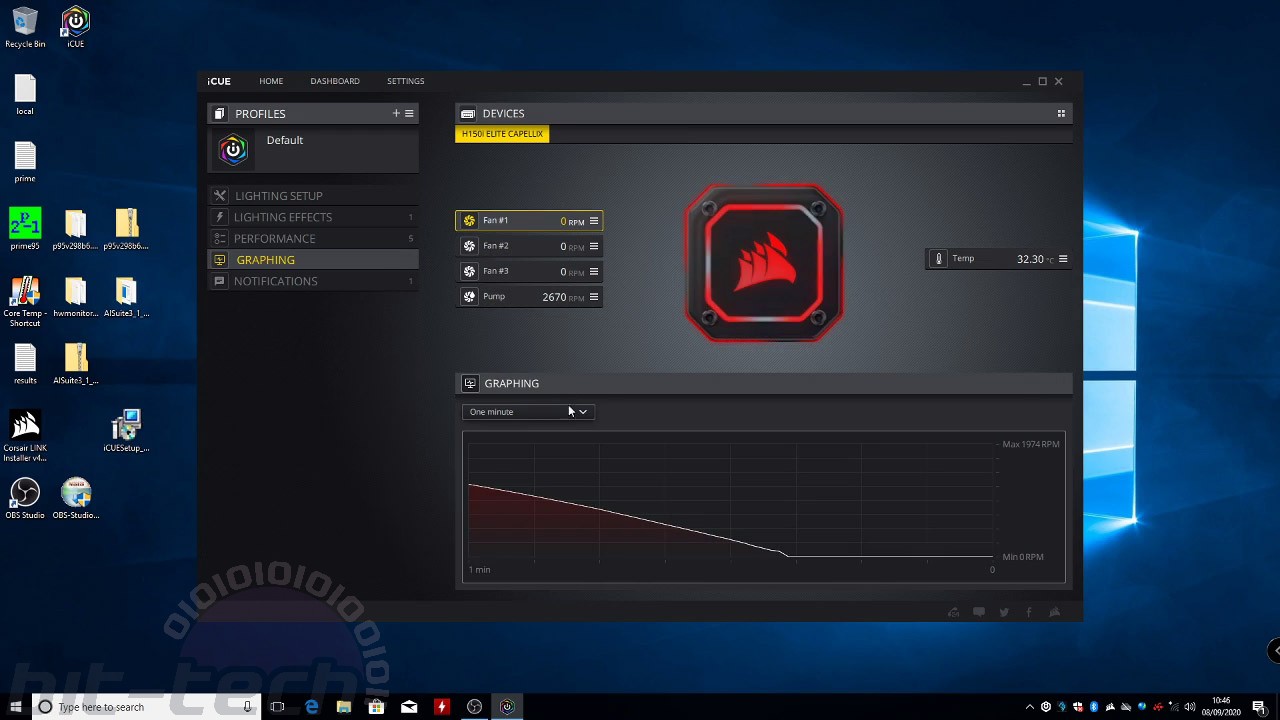
Finally, the Graphing menu lets you keep track visually of speeds and temperatures, while the Notifications menu controls if and how the system and cooler should react should things get too hot.
Performance Analysis
Starting with the LGA 1151 platform, we unfortunately don’t have this year’s RGB Pro XT to compare to, but we do have the 360mm version of 2018’s Pro XT, which uses Asetek hardware and has a lower maximum fan speed of 1,600 RPM versus 2,400 RPM. The new Capellix cooler beats the older 360mm cooler, achieving the same or better temperatures in each profile while sustaining similar or lower fan speeds, and it’s especially good on the Quiet profile. At the top of this chart we’re reaching a bottleneck from the chip itself, and the excellent results from Noctua, especially with a single fan fitted with a low-noise adaptor, shows that the 360mm radiator doesn’t benefit you much, even if it does have a 2°C better result than the 240mm-based H100i RGB Platinum.
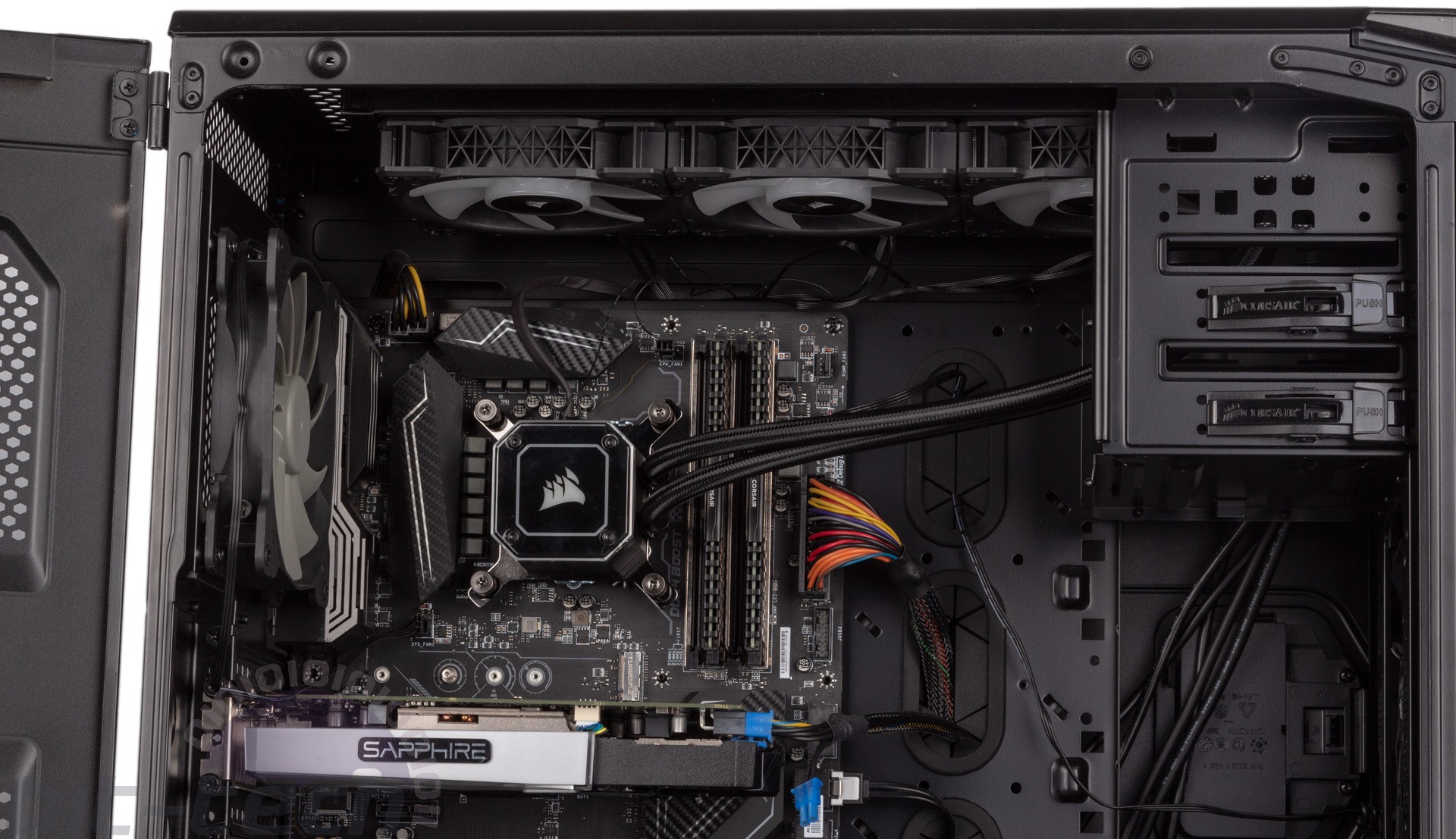
The AM4 system places greater strain on the coolers. Once again, equivalent profiles produce better results on the new cooler, but this time at least part of that is related to fan speed, if not all of it. Both Quiet and Balanced results in fan speeds higher by about 200 RPM. Even so, the thermal improvement on Quiet is very good. At Extreme, the difference is over 500 RPM, and the final fan speed of well over 2,000 RPM on the new cooler is indeed on the extreme. Yes, the cooler gets a chart-topping result against the competition, but it comes at the cost of noise levels that most will find excessive. Noctua’s NH-U12A holds its own here, and the new cooler also tracks closely with the 240mm H100i RGB Platinum.
The LGA 2066 system generates a lot of heat, and here we really start to see favouritism for liquid coolers and larger radiators. The difference between the new H150i and the older Asetek one is also more pronounced thanks to a big difference in fan speeds, especially in the Quiet and Extreme profiles. The Quiet result is the more impressive one, as while it’s very much audible, it also now offers much better performance than the Noctua. The same remains true using the Zero RPM curve as well.
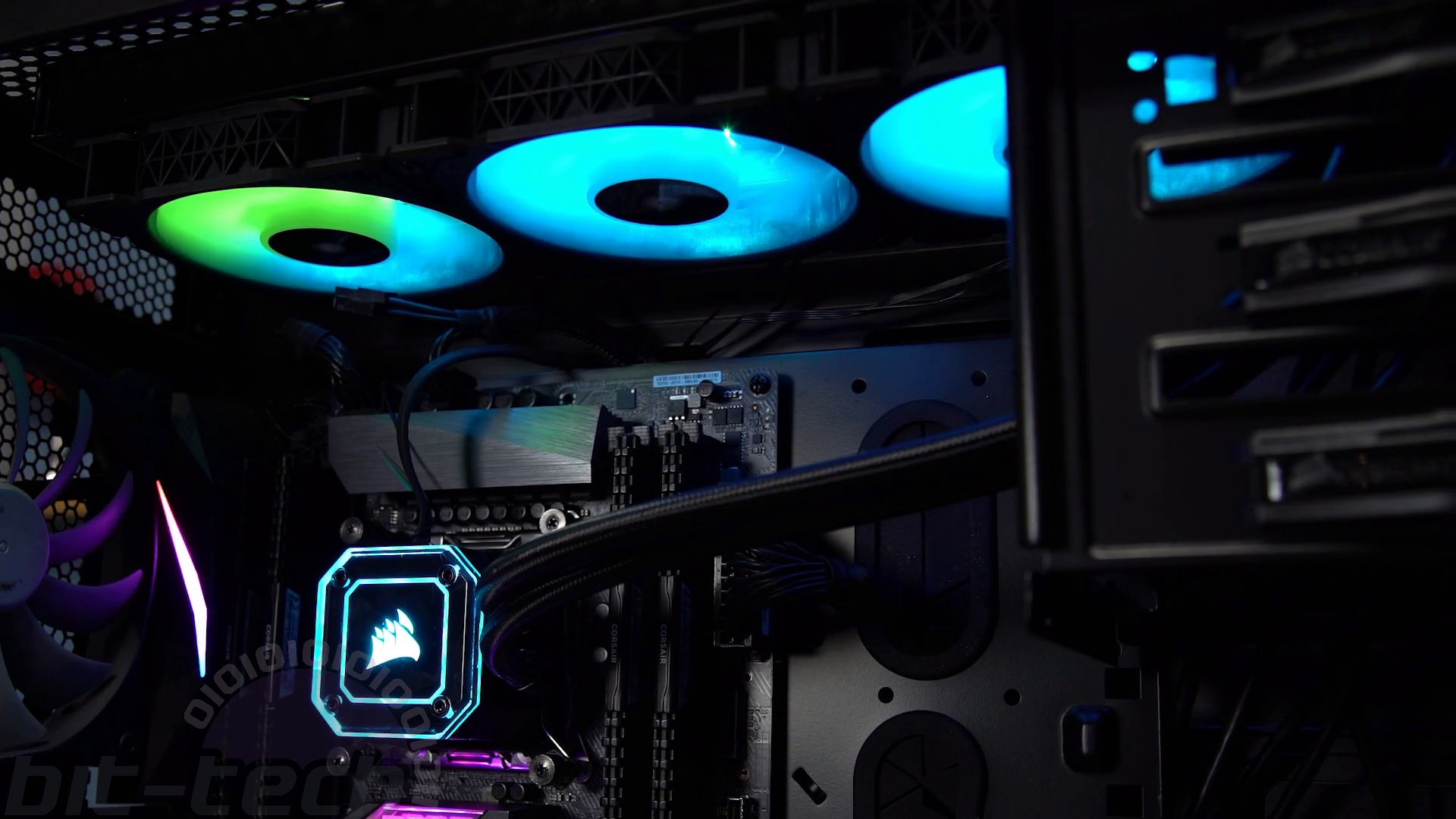
Corsair admits that the fan curves on this cooler are generally more aggressive (‘performance oriented’ in marketing parlance) than before, which explains why profiles that share the same name result in higher fan speeds and better performance. The trade-off, of course, is noise, and with no real physical changes to the pump or fans, Corsair’s noise:performance ratio tracks with previous offerings. This isn’t a bad thing, as you can get a good amount of performance in the sub-1,000 RPM arena. Anything beyond 1,500 RPM was, to our ears, on the annoying side, but even with this as a maximum you’ll see decent temperatures. One thing we especially like is the slow fan ramping (both up and down), as quick changes in fan speed are more irritating than gradual ones, and Corsair wisely ensures the fan RPMs rise and fall slowly.
The pump operates at around ~2,250 RPM in Quiet mode, ~2,450 RPM in Balanced (the default), and ~2,650 in Extreme. The volume is always low, but the pitch becomes whinier with each increase in speed. Thankfully, we never saw more than a 2°C difference between Quiet and Extreme in tests where we fixed the fan speed (even on the beastly LGA 2066 system); it’s fan speed that makes the biggest difference to performance and noise, so most users can safely set the pump to Quiet and focus on optimising the fan behaviour for their environment.
Conclusion
First off, if you’re seeking a cooler with excellent bang for buck in terms of raw performance, you’ll be wanting to look elsewhere. The CoolIT platform at the heart of the Capellix coolers is nothing new, nor are the ML RGB fans (apart from the extra LEDs), so while the newly-tuned fan curves eke out more performance, the overall balance of noise and performance is largely unshifted, and you can get a similar experience here elsewhere even within Corsair’s own catalogue.
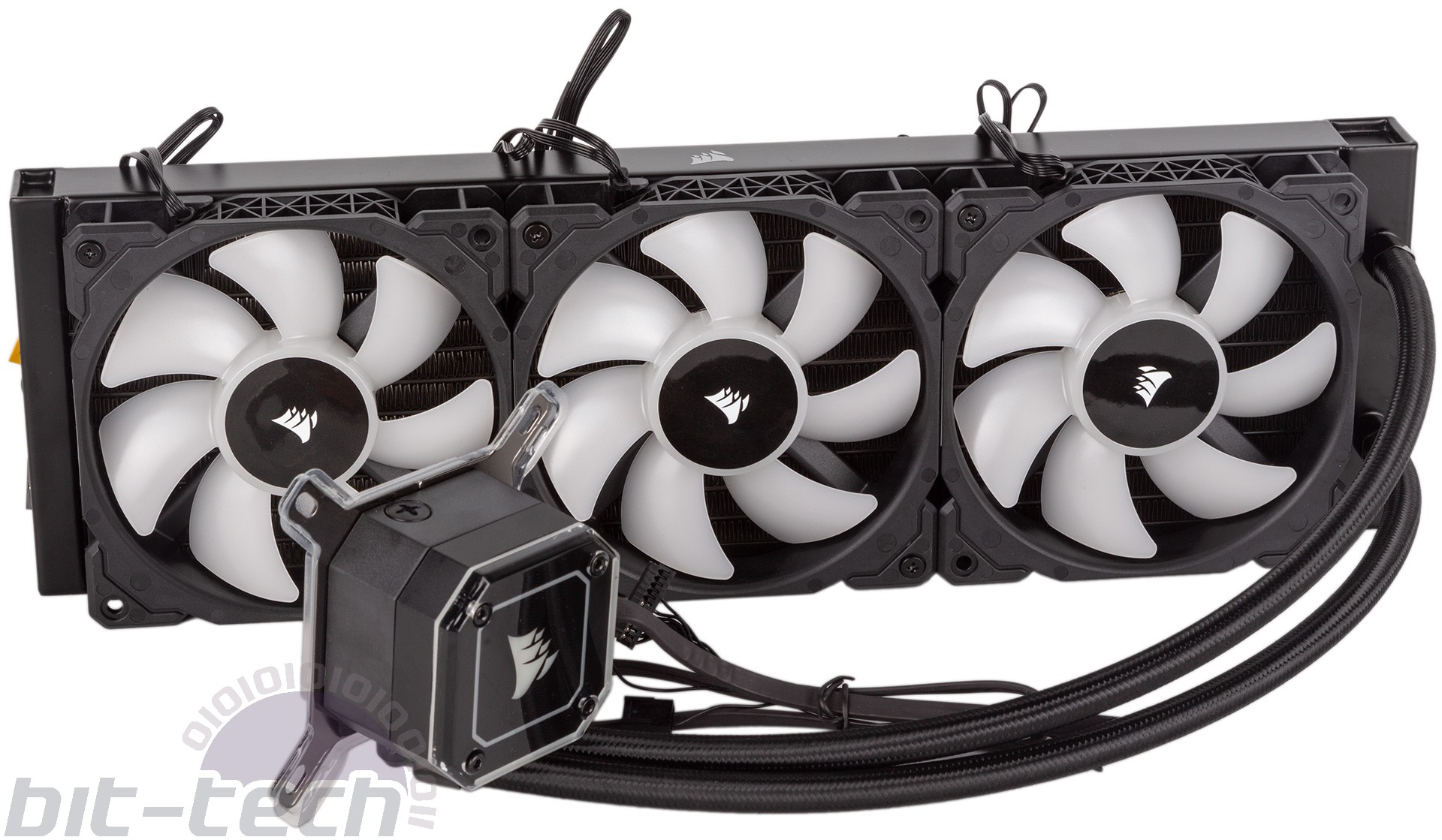
Clearly, though, this is a launch focussed more on features than performance. Whether the price tag is worth it or not depends on how much you value those new features. If the quality of the Capellix LEDs and the extra functionality/expandability enabled by the Commander Core are just what you’re after, then the iCUE H150i Elite Capellix is easy enough to recommend. Yes, the price tag is very high, but it’s not unheard of for a 360mm all-in-one cooler with RGB lighting on the pump and fans, and that lighting is arguably better implemented here than anywhere else at both the hardware (Capellix) and software (iCUE) levels.
It's irksome not to have magnets on the Commander Core and not to get extra thermal paste included, but these are nitpicks. The design and build quality are good, and the mounting system continues to be easy to use. The Capellix collection clearly complicates Corsair’s confusing catalogue of coolers (lovely alliteration - ed)… more, but being available at so many price points likely has benefits too. It’s also a bit less of a minefield as far as the 360mm H150i offerings go.
In short, if you’re after an all-in-one cooler with great lighting backed up by easy-to-use software, the iCUE H150i Elite Capellix fits the bill. It’ll tame overclocked CPUs with ease, and it’s simple to find a balance of noise and performance that works for you if it isn’t quite right out of the box.


MSI MPG Velox 100R Chassis Review
October 14 2021 | 15:04



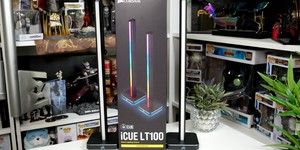




Want to comment? Please log in.